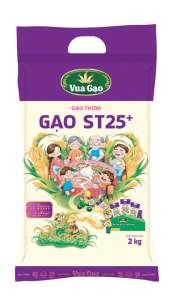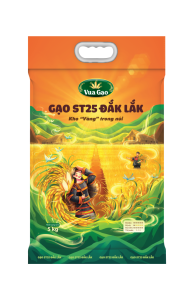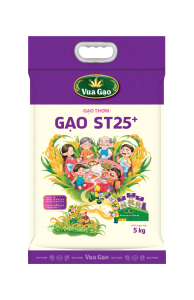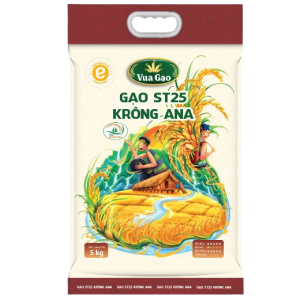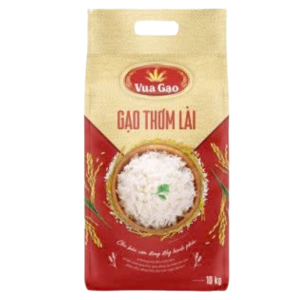PRODUCT INFORMATION
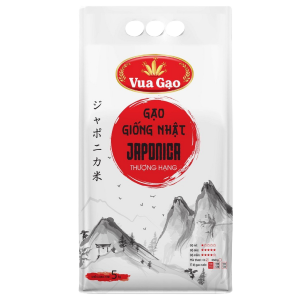
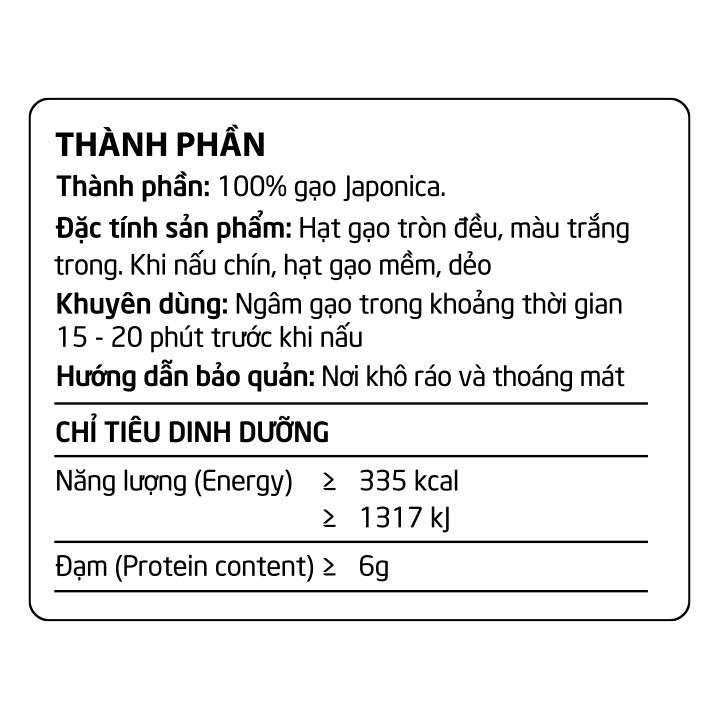
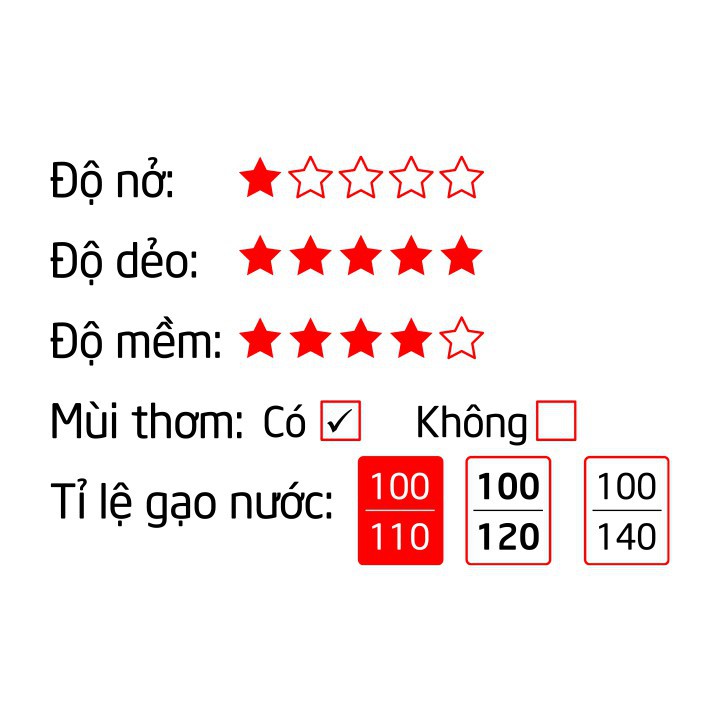
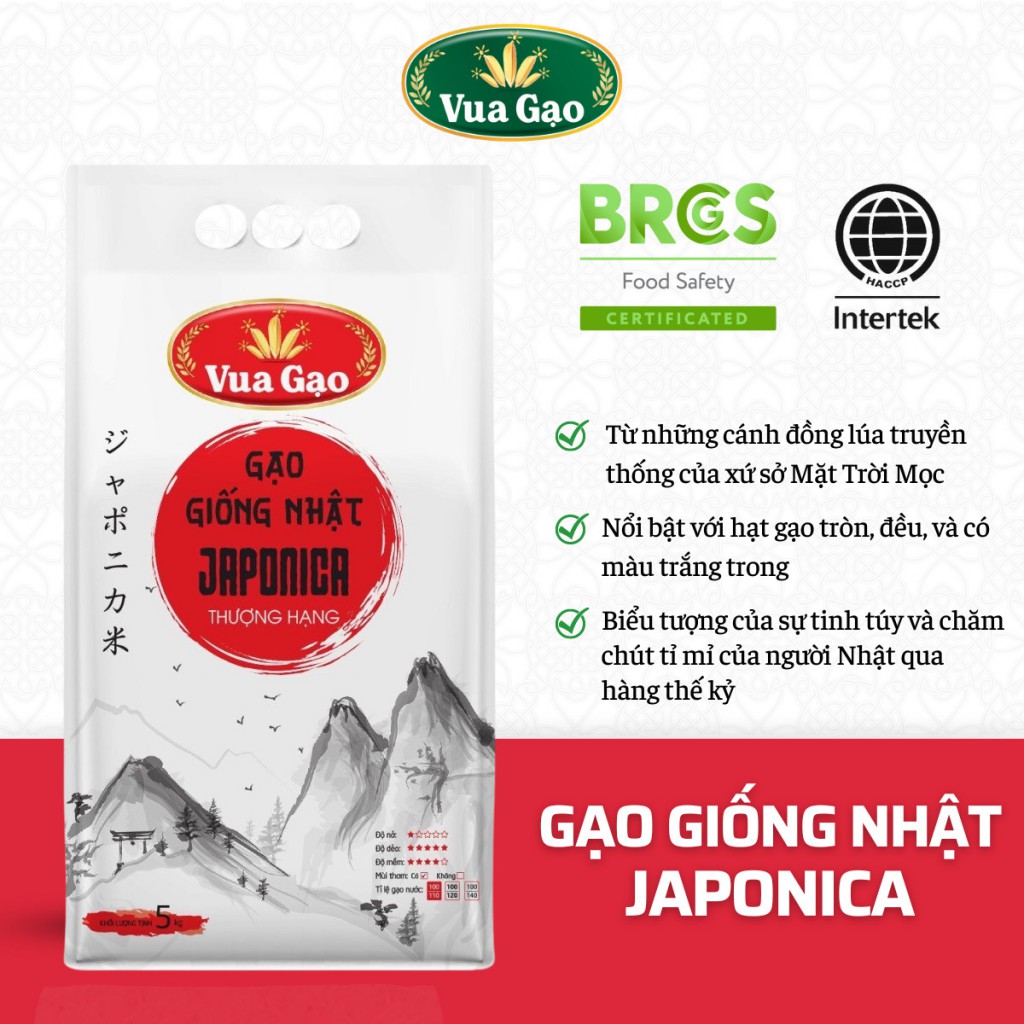
SHINNICHI RICE 5KG BAG
- The famous Japonica rice variety comes from Japan.
- Rice grains are round, smooth, and clear white, naturally fragrant.
- Cooke rice is soft, highly sticky, sweet, nutty tasty, and still delicious even when cooled.
- Ingredients: 100% White Rice.
- Storage: Place in a cool and dry place, and close the packaging tightly after use.
- HSD: 1 year from the date of manufacture.
- Status: In stock
- Made in Viet Nam
Status: In stock
Origin: Việt Nam
Nowadays, the demand for health care for each family meal is increasing and Japan's culinary culture is also developing strongly. Those who love and have an endless passion for Japanese culture will surely know Japan's Japonica rice Therefore if you have loved rice balls, sushi, and seafood mixed rice, ... then let's start by learning about this rice type because this rice formed Japan's culinary culture. The Japanese are famous for being meticulous in eating, so how special will the main food that makes up their culinary soul? Let's find out with VuaGao!
1. What you need to know about Japanese rice
Japan has always been known as a country with smart, industrious, and hardworking people. Each of their products is created with extremely high quality and meticulousness and is trusted and selected by many consumers. Japonica rice is one of them, this rice type is highly appreciated for its quality, always creating trust for consumers from everywhere. So let's find out what kind of premium rice this is!
1.1. What is Japonica rice?
It is not an exaggeration to say that this rice type is one of the main ingredients contributing to the diversity in the culinary culture of the land of the rising sun. It is the daily staple food and the driving force behind the Japanese economy. Whoever you are, if you want to explore Japanese cuisine or want to throw a party with sushi, the first step you need to learn about this Japanese rice type.
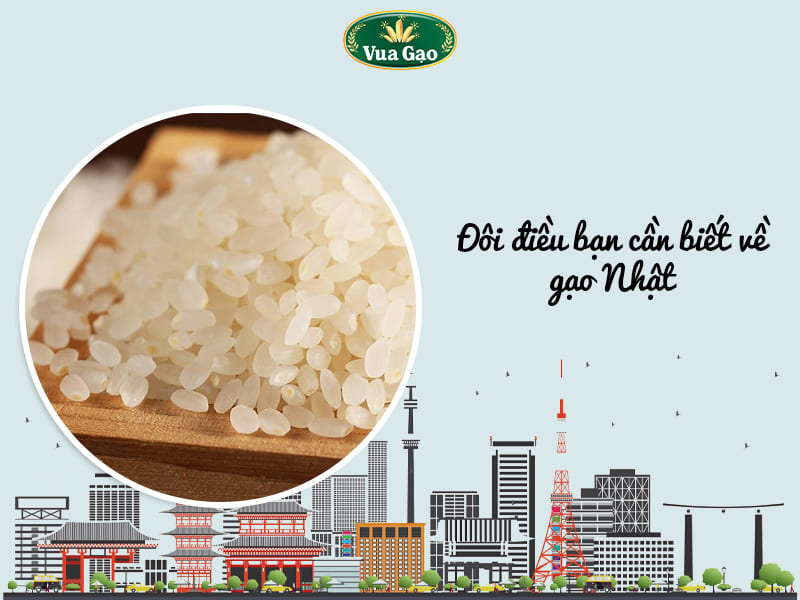
Gạo Nhật làm nên ẩm thực của xứ sở mặt trời mọc
Japanese rice is grown with safety standards and belongs to a healthy rice variety, so there is almost no use of plant protection drugs. This rice type contains many nutritional and mineral values that are good for the user's body. To add health and provide nutrients for the baby, nursing mothers can refer to using Japanese rice to cook porridge.
1.2. How many types of Japanese rice are there?
Japanese long-grain rice:
This rice grain is long, the length is 4-5 times the width. The cooked rice is spongy, soft, and firm; the rice grains separate and do not stick. Some long-grain rice varieties such as Jasmine, Basmati, Mexican rice,...
Japanese medium grain rice:
The rice grain is medium, the length is 2-3 times the width. The cooked rice is soft, moist, and slightly chewy and tends to stick together a bit. Some medium grain rice such as Bomba rice (used in Paella), and Arborio rice. Most Asian rice like Chinese rice is also medium grain.
Japanese round grain rice:
The representative of Japanese round rice is Japonica, each grain of rice is round and white, and cooked rice has a natural aroma, while cooled rice still retains its original flavor. Japonica rice grains are regular, and less prone to chipping and it is important to cook Japanese food properly, this type of rice is indispensable. Because of their round, short-grain appearance, medium and short rice grains are included in the same category. This can cause some confusion.
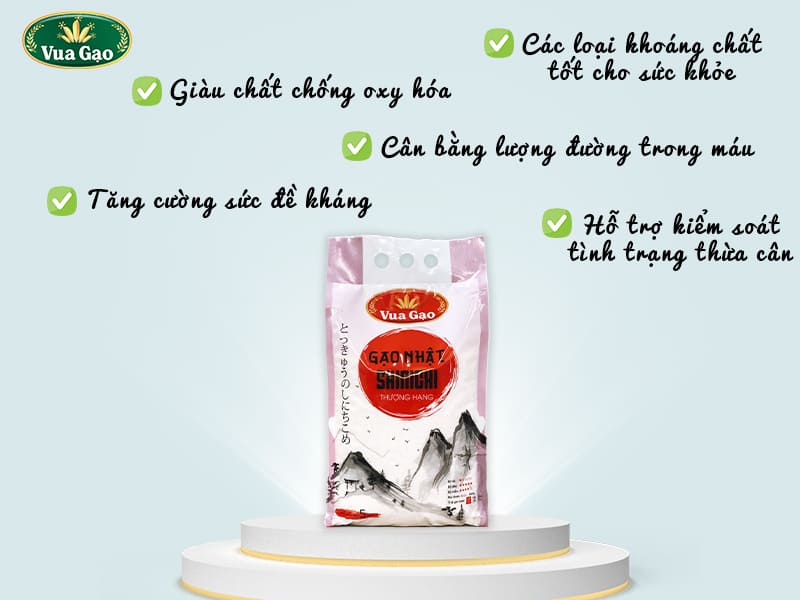
Gạo Nhật hạt tròn trĩnh, trắng trong
1.3. Japanese rice is used to cook porridge for babies
Many mothers when cooking porridge for their children often face cases that the baby refuses to eat or eats little, is not interested, even constipated. One of the main reasons may be that the mother chooses the wrong rice type, the rice grain after cooking into porridge not smooth and thick like a "restaurant".
Many mothers still recommend buying Japanese rice to cook porridge for babies, because this cooked rice is soft, sticky, naturally sweet, and has a rich nutrient composition which makes babies love to eat. You can refer to choose the right rice type for your baby.
1.4. Can Japanese rice make sushi?
As a pure agricultural rice variety of Japan. The cooked rice grains are round, naturally delicious, and very sticky. Not only used in every daily meal but also Japanese rice can be made into many other dishes.
Because this rice type is quite sticky, it is easy to roll or shape by hand according to your preference, so you can use it to make sushi, sashimi, or kimbap,... The rolled rice will stick tightly and look very beautiful. If your family is tired of the same repetitive meals as usual, then you can try to eat these traditional Japanese dishes to change of taste.
|
Xem Thêm:
|
2. Learn about the Japonica rice
2.1. What is special about Japonica rice?
This can be said to be a perfect rice variety in both taste and color, the rice grains are white, round, even, and less broken. Cooked rice is a very sticky, tasty, and charming natural fragrance that is hard to forget.
One characteristic of all delicious rice is that even cooled rice is still delicious. People often call the Japonica rice the pearl of the land of the rising sun, the soul that creates the diverse cuisine for the Japanese because each cooked rice grain is white, round, and soft like beautiful pearls stretching out to show off their colors.
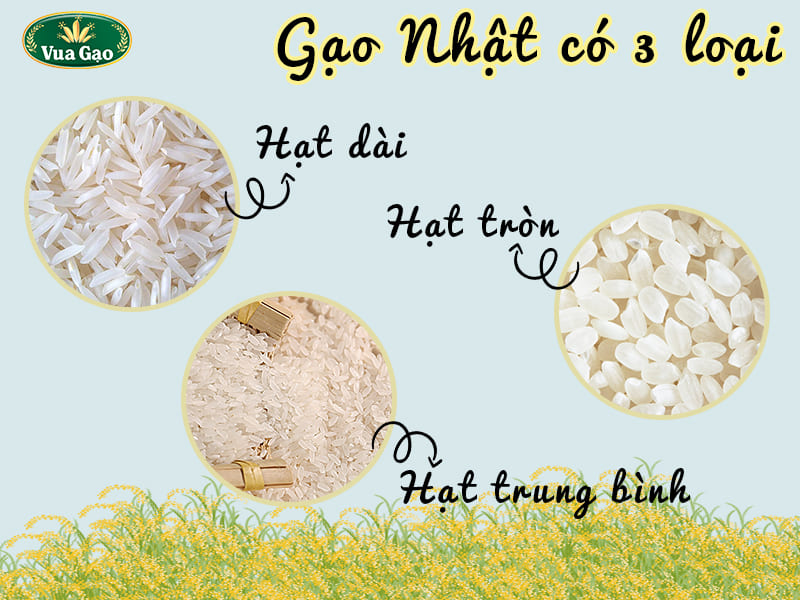
Gạo Nhật cho hạt cơm dẻo, thơm tự nhiên
2.2. Nutritional value of Japonica rice
Japonica rice is rich in antioxidants and healthy minerals such as magnesium, and selenium,... These substances affect regenerating protein and starch energy, helping to balance blood sugar and increase the body's resistance. Therefore, this rice type is very good for patients with liver disease, asthma, low blood pressure, and heart-related diseases.
We often have to suffer a lot in reducing the amount of starch to control overweight. Because fast food is growing strongly like today, it is the cause of women's weight increase. However, with Japonica rice, you are y comfortable completely when eating. Eating slowly and chewing thoroughly combined with Japanese foods will be very good for the body. Users can both keep fit and improve their health. Indeed, although the Japanese use rice a lot, Japan is still considered a country with the lowest obesity rate in the world.
A special thing that few other rice types is that Japonica rice can help women, mothers, and grandmothers lose weight.
|
Một điều rất đặc biệt mà ít có loại gạo nào khác có đặc tính này chính là Japonica có khả năng giúp các chị em, các mẹ, các bà giảm cân. |
2.3. What is the difference between Japonica rice and other rice types in Vietnam
You may not know that Japonica rice accounts for 80% of the world's rice production. Japonica rice grain is short and round and looks very cute. The rice grain is only slightly longer than the width, and cooked rice is more sticky than Vietnamese rice types.
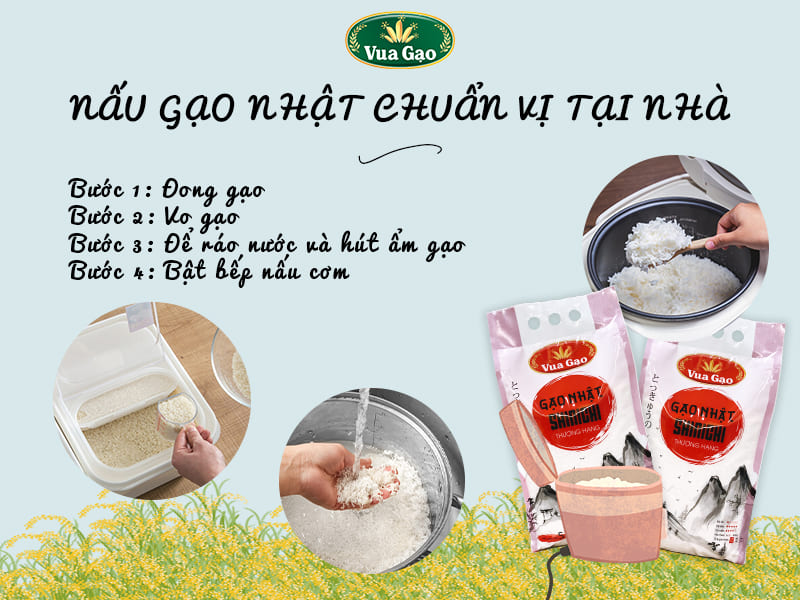
Cách nấu gạo nhật Japonica
Each grain of rice sticks to each other without becoming mushy if cooked correctly and poured with the right amount of water. Japonica rice grain has a higher starch content than regular rice. Japonica rice grains have an amylose starch content of about 15 - 18%, meanwhile, Indica rice grains are around 22-28%. This makes the difference in taste and feeling when eating.
2.4. Is Japonica rice grown in Vietnam good?
With the demand of consumers wanting to have prestigious Japanese quality products, so many products have been imported to supply the Vietnamese market more and more. Especially, moms with diapers love Japonica rice to cook nutritious porridge for their babies..
Seeing that need, Japonica rice was bred and grown on t Vietnam. Vietnamese people are also gradually familiar with this rice type grown in the country. Although it does not have the same soil as Japan, thanks to the fertility of the fields and the people's cultivation experience, this rice type grown in Vietnam still brings excellent quality that is not inferior to imported rice.
2.5. How the Japanese produce Japonica rice
Almost all the dishes of Japanese cuisine not only taste great but are also beneficial for health. The cultivation of this rice type is extremely feat, not everyone can do it. Only Japanese farmers who are industrious and hardworking can grow.
Japonica paddy is intercropped with shrimp, which means besides growing paddy, they raise shrimp. In addition, this rice type is cultivated according to the scientific process, saying no to growth stimulants.
In particular, unlike short-term rice varieties, Japonica is planted and cared for carefully for 120 days before harvesting. Each rice plant is cared for and carefully monitored by the hands of diligent farmers to avoid the worst situation affecting the quality and productivity of a whole field. It is the reason why the Japonica rice variety is often of high quality, organic and safe for consumers' health.
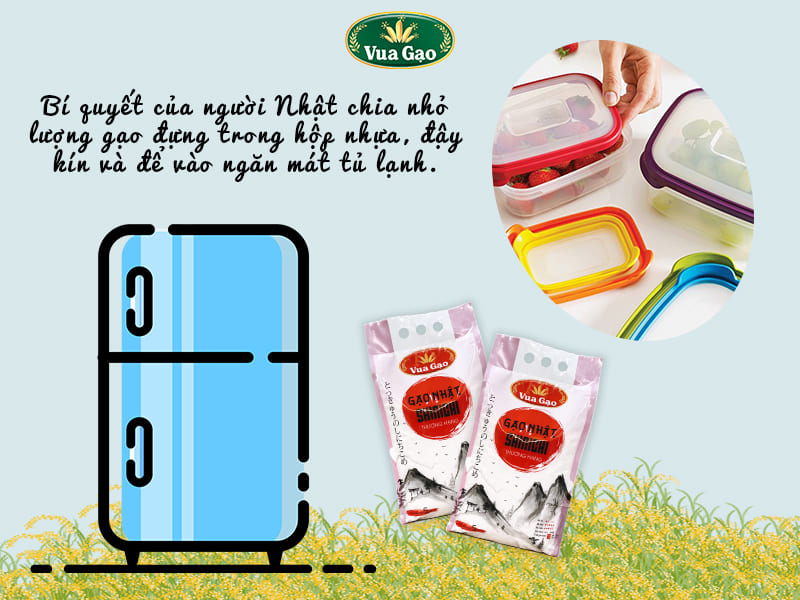
Cách bảo quản gạo Nhật Japonica
3. How to cook Japanese rice at home
Although the production process of Japanese rice is very elaborate and meticulous, the process of cooking Japanese rice is not as difficult as you think. To cook the right Japanese-style rice, you can refer to the following steps:
Step 1: Measure the rice
You take a sufficient amount of rice to eat. To cook Japanese rice, you can use a regular pot or a cooker.
Step 2: Wash the rice
You put water in the pot so that the amount of water on the surface is about 3-4 knuckles from the rice. Then you proceed to wash 2-3 times until the water is transparent.
According to the Japanese experience: when washing rice, they will use 5 fingers to rotate it clockwise. For the second water, gently rub the rice grains like a massage to prevent the rice grains from breaking.
Step 3: Drain and dehumidify the rice
Wash the rice and drain, then put the rice in the pot, and cover it with a clean damp cloth for 30 minutes to let the rice absorb the moisture. After 30 minutes, you cook rice as usual.
If you want to cook sushi rice, you need to soak the rice for 30 minutes to let the water soak into the rice grains, the cooked will reach the sticky you want.
Step 4: Turn on the stove to cook rice
After the rice is cooked, wait about 15 minutes for the rice grains to be very drained and will be more delicious. Cooked rice has a sweet, flexible, and extremely attractive taste.
4. How the Japanese preserve rice
The Japanese are very meticulous and pay attention to the quality of food and issues directly related to health. Therefore, in this country, consumers are often fussy eaters, they often buy rice that has only been peeled, not polished, and still has bran, then brought back and stored it in the refrigerator. When needing to use it, they bring rice to mini-mills to refine rice.
In Vietnam, there are no mini factories like this. Many families have the habit of buying a lot of rice to fill up the bin. The reason is that buying many prices will be cheaper, not having to go to buy many times. And according to the concept of feng shui, rice is always full, and the money in the family is abundant. However, if the storage conditions of rice are not good, it is easy to get weevils and reduce the quality of rice.
How to preserve rice as good as new?
-
Please make sure that the rice you buy is new. New rice is of course always better and better quality than old rice. Besides, new rice will not cause damage, weevils, or disease-causing larvae. Do not buy old rice and rice grains that are discolored and too dry.
Rice is a highly hygroscopic food, sunlight and moisture can cause the rice to degrade in quality, and lose its flavor and nutrient content inherent in Japanese rice. If possible, you can follow the Japanese to divide the amount of rice in a plastic container, cover it, and put it in the refrigerator. Otherwise, it can be stored in a dedicated rice container. Store rice in a cool place, away from moldy places and direct sunlight. It is best to keep the rice at room temperature around 25 degrees Celsius.
|
Tell you good tips:
|
5.Where to buy Japanese rice?
One of the first Japonica distributors in Vietnam is VuaGao. Currently, Our Japonica - Shinichi Japanese rice is distributed in all supermarket systems in Vietnam.
With the mission of providing quality rice to ensure the health of consumers, VuaGao is committed to providing rice that is certified by the international standards of Vietnamese and SGS. With a safe quality control process from the stage of buying fresh paddy to the finished product, all have complied with British Retailer Consortium (BRC) and HACCP standards. Through the above information, we hope you will better understand how to distinguish as well as how to use Japanese rice appropriately in daily meals. If you love Japanese food, you should read it all!
Biên tập bởi: Vua Gạo Marketer
Tags: gạo nhật là gì, gạo nhật japonica, gạo japonica, gạo nhật hạt tròn, mua gạo nhật ở đâu.
KING GREEN NATURAL FOOD JOINT STOCK COMPANY
Showroom: 88 Ton That Tung, Ben Thanh Ward, District 1, Ho Chi Minh City
Office: Enterprise Tower, 290 Ben Van Don Street, Ward 2, District 4, Ho Chi Minh City
Production Factory: Tay Hamlet, Kim Son Commune, Chau Thanh District, Tien Giang Province
Phone: 1800.8012
Email: info@vuagaovn.com
Facebook: facebook.com/vuagaovn
Website: vuagaovn.com
SIMILAR PRODUCT




